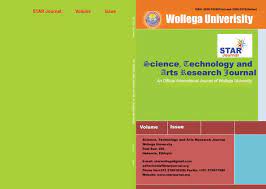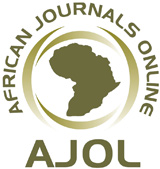The Effects of Land Use Types on Soil Quality Indicators: Analysis of the Upper Gibe Watershed in Western Ethiopia
DOI:
https://doi.org/10.20372/star.V14.i2.15Keywords:
Land Use Type, Soil Quality Indicators, Sustainable Land Management, Upper Gibe Watershed, Western EthiopiaAbstract
Land use changes affect soil quality, especially in environmentally vulnerable locations like Ethiopia's Western Highlands' Upper Gibe Watershed. Forest, pasture, and agricultural land were assessed for soil quality indicators in this study. In 60 composite soil samples (0–20 cm), particle size distribution, permeability, pH, organic carbon, total ash, accessible phosphorus, and cationic exchange capacity were studied. Significant statistical differences (p < 0.05) were seen between land use types. Forest land had the most organic carbon (3.71%), total nitrogen (0.32%), available phosphorus (14.93 mg/kg), and cationic exchange capacity (38.1 cmol(+)/kg), indicating better soil health. In contrast, cultivated land has lower organic carbon (1.65%), total nitrogen (0.11%), and cationic exchange capacity (21.6% cmol(+)/kg) and higher soil bulk density (1.23 g/cm³), indicating depletion in soil quality. Most likely due to excessive tillage and a lack of organic inputs, forest land has moderate values but a higher bulk density (1.23 g/cm³). Soil pH was between 5.8 and 6.7 and was somewhat acidic to neutral. The study emphasizes the need for improved soil management practices tailored to certain land use types to improve soil sustainability.
Downloads
Metrics
References
Asmamaw, L. B., & Mohammed, A. A. (2012). Effects of slope gradient and changes in land use/cover on selected soil physico-biochemical properties of the Gerado catchment, north-eastern Ethiopia. International Journal of Environmental Studies, 70 (1), 111–125. https://doi.org/10.1080/00207233.2012.75116
Asmare, T. K., Abayneh, B., Yigzaw, M., & Birhan, T. A. (2023). The effect of land use type on selected soil physicochemical properties in Shihatig watershed, Dabat district, Northwest Ethiopia. Heliyon,9(5), e16038. https://doi.org/10.1016/j.heliyon.2023.e16038
Ayilara, M., Olanrewaju, O., Babalola, O., & Odeyemi, O. (2020). Waste Management through Composting: Challenges and Potentials. Sustainability, 12(11), 4456. https://doi.org/10.3390/su12114456
Bogale, T., Damene, S., Seyoum, A., & Haregeweyn, N. (2024). A mixed method approach for analyzing drivers of land use land cover change in the Northwestern Ethiopian highlands. Environmental Monitoring and Assessment, 196(12). https://doi.org/10.1007/s 10661-024-13342-2
Bremner, J. M. (1960). Determination of nitrogen in soil by the Kjeldahl method. The Journal of Agricultural Science, 55(1), 11–33. https://doi.org/10.1017/s0021859600021572
Brevik, E. C., Krzic, M., Muggler, C., Field, D., Hannam, J., & Uchida, Y. (2022). Soil science education: A multinational look at current perspectives. Natural Sciences Education, 51(1), 1-21. https://doi.org/10.1002/nse2.20 077
Choi, M., Lee, C., Kim, L., Choi, S., Bong, Y., Lee, K., & Shin, W. (2024). Assessing sources of nutrients in small watersheds with different land-use patterns using TN, TP, and NO3--N. Journal of Hydrology Regional Studies, 55, 101958. https://doi.org/10.1016/j.ejrh.20 24.10 1958
Dai, K. H., & Richter, D. D. (2000). A reexamination of exchangeable acidity as extracted by potassium chloride and potassium fluoride. Communications in Soil Science and Plant Analysis, 31(1–2), 115–139. https://doi.org/10.1080/00103620009370424
Gashaw, T., Tulu, T. & Argaw, M. (2018). Erosion risk assessment for prioritization of conservation measures in Geleda watershed, Blue Nile basin, Ethiopia. Environ Syst Res 6, 1-14. https://doi.org/10.1186/s40068-016-007 8-x
Kassa, H., Dondeyne, S., Poesen, J., Frankl, A., & Nyssen, J. (2017). Impact of deforestation on soil fertility, soil carbon and nitrogen stocks: the case of the Gacheb catchment in the White Nile Basin, Ethiopia. Agriculture Ecosystems & Environment, 247, 273–282. https://doi.org/10.1016/j.agee.2017.06.034
Kebebew, S., Bedadi, B., Erkossa, T., Yimer, F., & Wogi, L. (2022). Effect of different Land-Use types on soil properties in Cheha district, South-Central Ethiopia. Sustainability, 14(3), 1323. https://doi.org/10.3390/su14031323
Koudahe, K., Allen, S. C., & Djaman, K. (2022). Critical reviews of the impact of cover crops on soil properties. International Soil and Water Conservation Research. 10 (2022) 343354. https://doi.org/10.1016/j.iswcr.2022.09.002
Lemma, A., Wakgari, T., & Kebede, G. (2025). Effect of land use types and slope on selected soil physicochemical properties in Bubisa Watershed, Adea Berga District, Central Ethiopia. International Journal of Environmental Monitoring and Analysis, 13(1), 15–27. https://doi.org/10.1 1648/j.ijema.20251301.12
Liu, L., & Ma, X. (2024). Prediction of Soil Field Capacity and Permanent Wilting Point Using Accessible Parameters by Machine Learning. Agri Engineering, 6(3), 2592-2611. https://doi.org/10.3390/agriengineering603015
Masha, M., Belayneh, M., & Tedila, G. (2023). Assessment of land use land cover dynamics and its contributing factors in Adama district, central Ethiopia. International Journal of Environmental Quality, 55(1), 42–54. https://doi.org/10.6092/issn.2281-4485/16917
Melero, S., López-Garrido, R., Murillo, J. M., & Moreno, F. (2009). Conservation tillage: Short- and long-term effects on soil carbon fractions and enzymatic activities under Mediterranean conditions. Soil and Tillage Research, 104 (2), 292–298. https://doi.org/10.1016/j.still.2009 .04.001
Negassa, D. J. (2020). Effects of land use types on selected soil properties in central highlands of Ethiopia. Applied and Environmental Soil Science, 2020, 1–9. https://doi.org/10.1 155/2020/7026929
Prasad, R., Hochmuth, G. J., & Boote, K. J. (2015). Estimation of nitrogen pools in irrigated potato production on sandy soil using the model SUBSTOR. PLoS ONE, 10(1), e0117891. https://doi.org/10.1371/journal.pone.0117891
SAS institute inc v world programming ltd. (2012). Reports of Patent Design and Trade Mark Cases, 129(12), 933–970. https://doi.org/ 10.1093/rpc/rcs048
Teferi, E., Bewket, W., Uhlenbrook, S., Wenninger, J., & Simane, B. (2013). The use of remote sensing to quantify wetland loss in the Choke Mountain range, Upper Blue Nile basin, Ethiopia. Hydrology and Earth System Sciences, 17(2), 979–989. https://doi.org /10.5194/hess-17-979-2013
Vanlauwe, B., Descheemaeker, K., Giller, K. E., Huising, J., Merckx, R., Nziguheba, G., Wendt, J., & Zingore, S. (2015). Integrated soil fertility management in sub-Saharan Africa: unravelling local adaptation. Soil, 1(1), 491–508. https://doi.org/10.5194/soil-1-491-2015
Vepraskas, M. (1986). Nature and properties of soils. Agriculture Ecosystems & Environment, 16(3–4), 293–295. https://doi.org/10.1016/ 0167-8809(86)90013-7
Wolde, B., Moges, A., & Grima, R. (2023). Assessment of the combined effects of land use/land cover and climate change on soil erosion in the Sile watershed, Ethiopian Rift Valley Lakes Basin. Cogent Food & Agriculture, 9(2). https://doi.org/10.1080/2331 1932.2023.2273630
Woldeamlak, B., & Solomon, A. (2014). Impacts of land use and land cover change on selected soil properties in the North Western Ethiopian Highlands. Soil and Water Research, 9(1), 1–9. https://doi.org/10.17221/10/2013-SWR
Yihenew, G., Getachew, A., & Solomon, K. (2015). Effects of land use on selected soil properties in Northwestern Ethiopia. Environmental Systems Research, 4(1), 18. https://doi.org/10.11 86/s40068-015-0041-x
Yimer, F., Ledin, S., & Abdelkadir, A. (2008). Soil organic carbon and total nitrogen stocks as affected by topographic aspect and vegetation in the Bale Mountains, Ethiopia. Geoderma, 147(2), 140–146. https://doi.org/10.10 16/j.geoderma.2008.08.001
Downloads
Published
How to Cite
License
Copyright (c) 2025 Journal of Science, Technology and Arts Research

This work is licensed under a Creative Commons Attribution-NonCommercial 4.0 International License.
STAR © 2023 Copyright; All rights reserved





